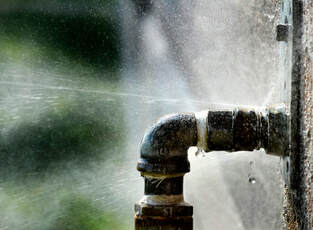Overview To Water Leak Detection In The House
Overview To Water Leak Detection In The House
Blog Article
What're your insights and beliefs on Locating water leaks?

Early discovery of leaking water lines can alleviate a potential calamity. Some tiny water leakages may not be noticeable.
1. Examine the Water Meter
Every residence has a water meter. Checking it is a proven way that aids you find leakages. For starters, shut off all the water sources. Make sure no one will purge, utilize the tap, shower, run the washing maker or dish washer. From there, go to the meter and also watch if it will transform. Because no person is using it, there must be no activities. That indicates a fast-moving leak if it relocates. Likewise, if you discover no changes, wait a hr or two and also check back once again. This suggests you might have a slow leak that might also be below ground.
2. Examine Water Consumption
Examine your water bills as well as track your water consumption. As the one paying it, you ought to notice if there are any type of inconsistencies. If you detect sudden changes, in spite of your consumption coinciding, it suggests that you have leakages in your plumbing system. Keep in mind, your water costs should fall under the exact same range monthly. An unexpected spike in your expense suggests a fast-moving leakage.
Meanwhile, a stable increase monthly, even with the same habits, shows you have a slow-moving leakage that's additionally gradually intensifying. Call a plumber to extensively examine your property, especially if you really feel a cozy area on your floor with piping underneath.
3. Do a Food Coloring Examination
When it comes to water usage, 30% comes from toilets. If the shade somehow infiltrates your dish during that time without flushing, there's a leak in between the tank and also bowl.
4. Asses Outside Lines
Don't neglect to check your outside water lines also. Should water leak out of the link, you have a loose rubber gasket. One tiny leakage can waste lots of water and also spike your water expense.
5. Evaluate and Evaluate the Scenario
Homeowners ought to make it a routine to examine under the sink counters and also even inside cupboards for any type of bad odor or mold and mildew development. These two red flags suggest a leakage so punctual focus is required. Doing routine evaluations, also bi-annually, can conserve you from a significant trouble.
If you know your home is already old, keep a watchful eye on your heating units, hose pipes, pipes etc. Check for discolorations as well as compromising as a lot of pipelines as well as home appliances have a life expectancy. They will also naturally deteriorate due to tear and also wear. If you think leaking water lines in your plumbing system, don't wait on it to escalate. Call a professional plumber immediately so you do not wind up with an awful mess in your house.
Early discovery of leaking water lines can reduce a potential calamity. Some little water leaks may not be noticeable. Examining it is a proven method that helps you uncover leaks. One tiny leakage can squander loads of water as well as spike your water costs.
If you presume leaking water lines in your plumbing system, do not wait for it to intensify.
WARNING SIGNS OF WATER LEAKAGE BEHIND THE WALL
PERSISTENT MUSTY ODORS
As water slowly drips from a leaky pipe inside the wall, flooring and sheetrock stay damp and develop an odor similar to wet cardboard. It generates a musty smell that can help you find hidden leaks.
MOLD IN UNUSUAL AREAS
Mold usually grows in wet areas like kitchens, baths and laundry rooms. If you spot the stuff on walls or baseboards in other rooms of the house, it’s a good indicator of undetected water leaks.
STAINS THAT GROW
When mold thrives around a leaky pipe, it sometimes takes hold on the inside surface of the affected wall. A growing stain on otherwise clean sheetrock is often your sign of a hidden plumbing problem.
PEELING OR BUBBLING WALLPAPER / PAINT
This clue is easy to miss in rooms that don’t get much use. When you see wallpaper separating along seams or paint bubbling or flaking off the wall, blame sheetrock that stays wet because of an undetected leak.
BUCKLED CEILINGS AND STAINED FLOORS
If ceilings or floors in bathrooms, kitchens or laundry areas develop structural problems, don’t rule out constant damp inside the walls. Wet sheetrock can affect adjacent framing, flooring and ceilings.
https://www.servicemasterbyzaba.com/blog/how-to-detect-water-leakage-in-walls/

We had been guided to that article on Leaking water lines through an associate on a different site. Enjoyed reading our write up? Please share it. Help others find it. Thanks for your time invested reading it.
Report this page